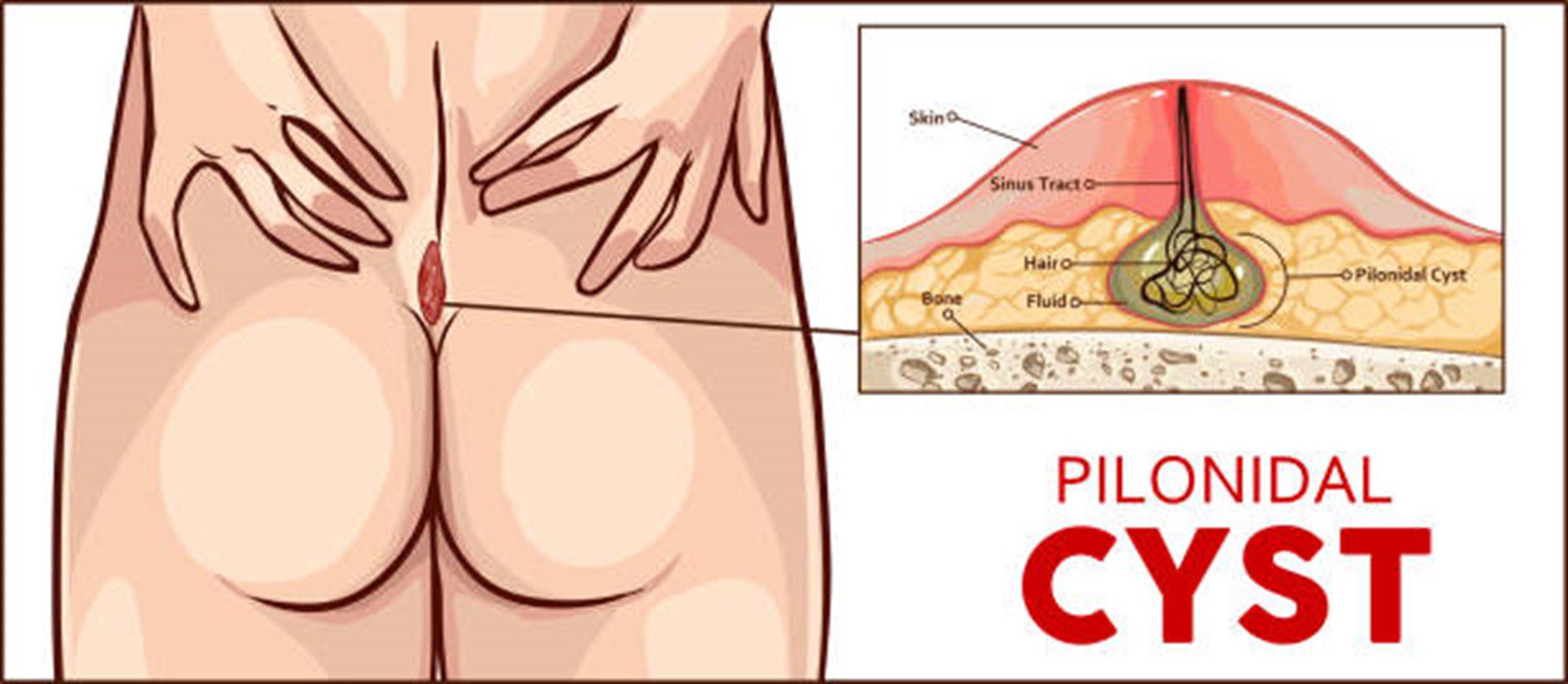
Pilonidal Disease
Pilonidal disease is a chronic skin infection in the crease of the buttocks near the tailbone. It occurs more commonly in men than women, and symptoms most often occur between puberty and age 40. The cause of pilonidal disease is not completely understood. Hair often grows in the cleft (crease) between the buttocks, and these hairs can traumatize and penetrate the skin at the top of the buttock crease. Friction and pressure from rubbed skin, tight clothing, cycling, or extended periods of sitting can force hair into the skin. The result can be irritation, infections, and the formation of an abscess. Symptoms can vary from mild to severe.
Symptoms include:
- Small dimple or pit near the top of the buttocks crease
- Irritation
- Pain
- Pus or blood leaking from an opening in the skin
- Swelling or redness
Diagnosis is typically confirmed by a physician's exam of the buttocks area, and treatment depends on the disease pattern. For pilonidal disease without abscess, the primary therapy is keeping the area free of hair. Weekly or bi-weekly topical depilatories or shaving is an option but can be difficult because of the location (unable to see) and deep crease. Hair removal is a more permanent option.
For pilonidal disease with abscess, the treatment is abscess drainage followed by removal of hair within the abscess cavity. Complex or recurring infections are treated surgically through excision. Continued hair removal following surgery is important to reduce the risk of recurrence.
Our clinic performs advanced laser hair removal that is easy, safe, and painless.
